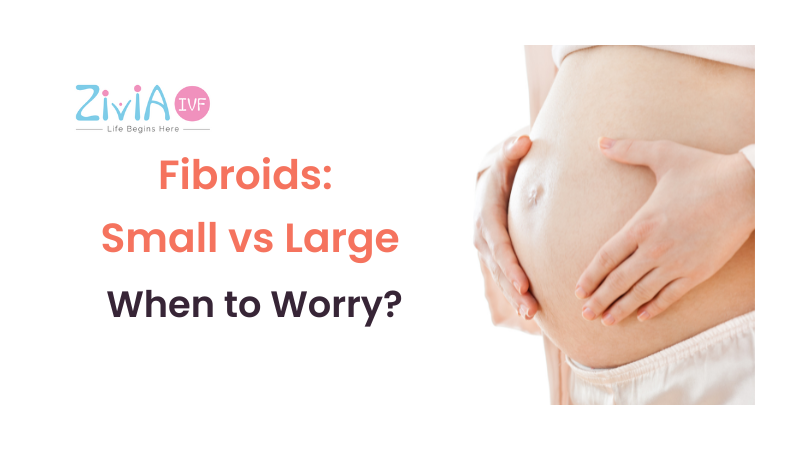
Fibroids, are uterine leiomyomas, are noncancerous growths that develop in or on the uterus.
Uterine fibroids, also called leiomyomas or myomas, They are of different sizes that may be as small as a tomato seed to as large as a grapefruit or even bigger. While fibroids are harmless in most cases and cause no symptoms, some large-sized fibroids may cause discomfort or health complications.
You might think about which size of fibroid is dangerous.
Read on to learn about fibroid size and the risks associated with them.
How do fibroids grow?
It grows from the smooth muscle tissue of the uterus and can develop in different parts of the uterus. While the exact cause of fibroid growth is unknown, it is usually caused by hormonal fluctuations of estrogen and progesterone. They can grow slowly or rapidly, and their growth patterns can vary from woman to woman.
Also Read: The Journey of Female Fertility: Understanding Female Fertility
Fibroids: Small vs Large
| Fibroid Size | Length | Comparison |
| Small | Less than 1 cm to 5 cm | Size of a pea to a cherry |
| Medium | 5 cm to 10 cm | Size of a small potato to a large orange |
| Large | 10 cm or more | Size of grapefruit to a small watermelon |
Why does fibroid size matter? Which size of fibroid is dangerous?
Fibroid size matters because larger can cause more significant symptoms and complications.
Generally, fibroids larger than 5 centimeters are more likely to cause problems and may require treatment, especially if they grow rapidly.
As they grow larger, they can cause increased pressure on the uterus and nearby organs, leading to symptoms such as heavy menstrual bleeding, pelvic pain, frequent urination, and constipation.
In some cases, large fibroids may also cause infertility or complications in pregnancy, such as premature delivery or childbirth with a cesarean section. Additionally, larger leiomyomas may be more difficult to remove, which can affect treatment options.
How are fibroid diagnosed?
Fibroids are typically diagnosed through a combination of physical exams and imaging tests. During a physical exam, a doctor may feel the uterus to detect any abnormalities, such as the presence of leiomyomas. Imaging tests, including ultrasound, MRI, or CT scans, can also help detect the presence of fibroids and provide information on their size and location.
Treatment for fibroids:
Treatment for uterine fibroids is based on the size, number, and location of the myomas and the associated symptoms. Small myomas that do not cause symptoms can be left untreated and monitored closely.
Treatment options include
- Medications like pain relievers, iron supplements, and birth control pills to control symptoms. Gonadotropin-releasing hormone agonists are prescribed to shrink fibroid.
- Uterine fibroid embolization blocks the blood-supplying artery to the fibroid. Once the blood supply is cut, the fibroid dies, leading to its shrinkage. The treatment plan depends on factors such as the size, number, and location of fibroids, symptoms, and desire for future pregnancy or uterine preservation.
- Surgical options include myomectomy to remove fibroid without damaging the uterus, which can be performed via hysteroscopy, laparoscopy, or laparotomy. Hysterectomy involves partial or full removal of the uterus and thus can prevent future pregnancies.
Uterine fibroids are benign growths of cells in the uterus and may or may not produce symptoms. While the size of it alone is not a significant concern, women experiencing discomfort or pain should seek treatment.
Seeking fibroid treatment from experienced doctors is crucial to ensure a proper diagnosis, appropriate treatment options, and optimal outcomes. Book an appointment at Zivia IVF and avail yourself of quality diagnosis and treatment.
